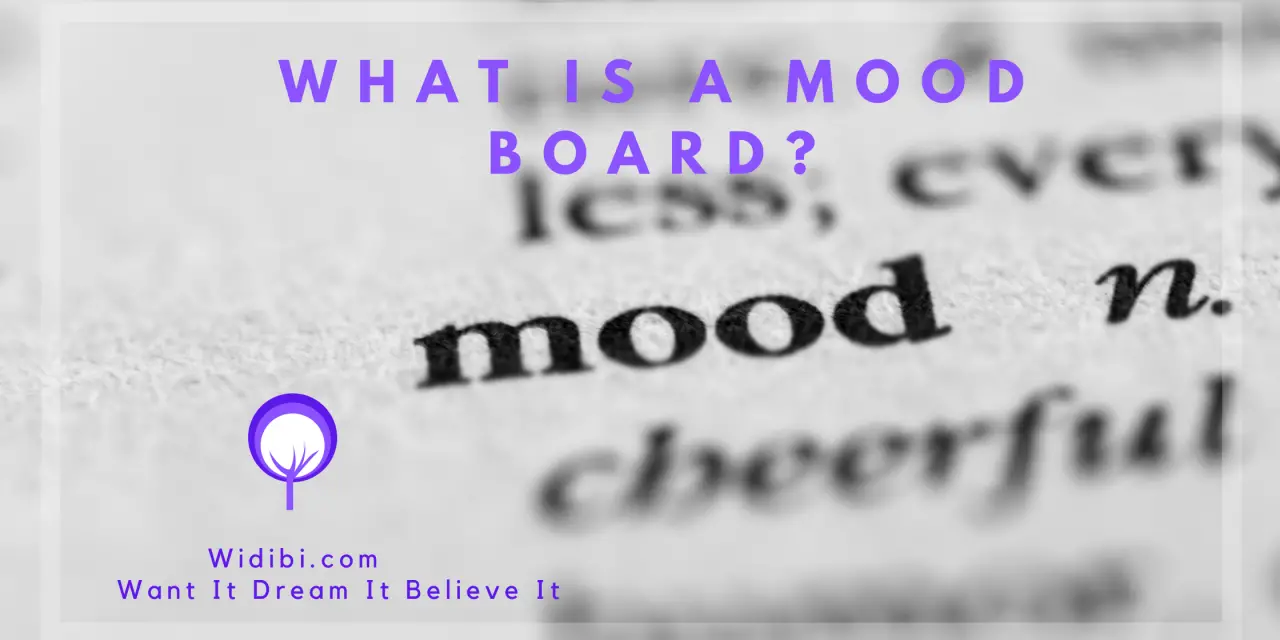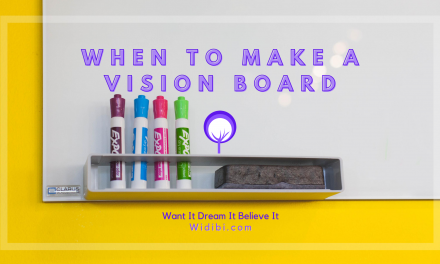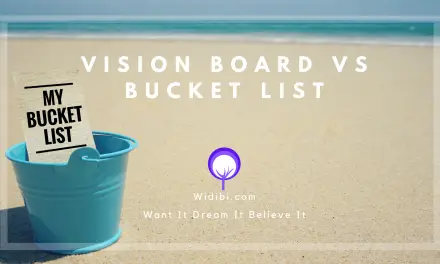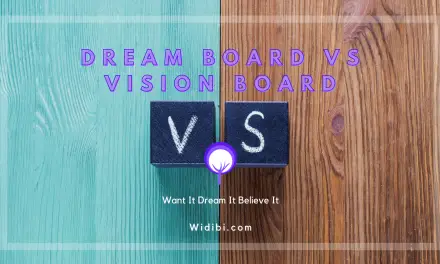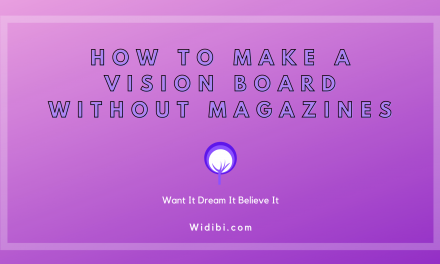Here at Widibi, we write extensively on vision boards and dream boards, where the terminology is mostly interchangeable, but we also like to extend ourselves into other forms of visual motivation. That’s where mood boards come in, and they’re most commonly associated with design and visual cues. Indeed, they’re similar to vision boards in that they’re designed to help people to craft and follow a vision. However, they’re less about goals and more about finding an identity or a style.
Similarities Between Mood Boards and Vision Boards
While the outcome of creating vision and mood boards differs slightly, the creation process, and often the final result, share plenty in common. They tend to comprise a combination of pictures, words and, given their purpose, often materials. These elements then come together to create a more cohesive impression of the style someone seeks to achieve.
Differences Between Mood Boards and Vision Boards
Crucially, the concept of ‘mood’ on these boards doesn’t involve a state of mind. Think of these boards more as ‘setting the mood’ rather than ‘being in a mood’.
Vision boards are often fairly personal, and many people prefer to either keep them a secret, or keep them on display for incidental viewing without actively sharing their vision with others. Mood boards differ once again by often having a role in expressing ideas.
They also can’t really get by with just words. I’ve written in the past on how a vision board can be just words, but the same doesn’t necessarily apply to mood boards which are often specifically created to serve as a visual medium.
With that said, they’re also used by writers, as well as designers and photographers, and they can be an ideal tool for setting a scene, mapping out a chapter or one of a multitude of other tasks where words alone can play a significant role.
The Role of Mood Boards
I think you’ll agree that it can be difficult to communicate visual ideas verbally. Pictures are the way to go and a mood board is the perfect device on which to place them. They fulfil a similar purpose to vision boards in that they contain an outline or potentially something even more specific about what you want to achieve.
However, instead of nice cars and houses, they contain imagery that tells a shorter-term design story. They’re used by all sorts of designers, from the graphic kind to the interior kind. This article by a graphic designer explains how they use mood boards to get a feel for a project and to create an identity for a room before they commence any of the manual work.
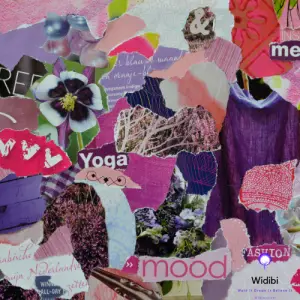
How to Make a Mood Board
The mood board process is often extremely similar to the creation of a vision board. The first decision is whether to go physical or digital.
In the former case, you might require something more robust than the old favourite of brightly coloured card usually utilised for vision boards. Many people prefer to use foam or cork boards as the basis for their creations, especially if they plan to include swatches, materials and anything else that could be chunkier than a printed photograph.
If you decide to go digital, then you do forego the option to include materials, but that’s not a disaster. If you’re already familiar with the texture, then the colour alone can be sufficient. This is where the process overlaps with vision boards, as anything you can use for a digital vision board, you can use for a mood board.
I like to use Canva, but there are other digital design tools out there like Photopea and you can also use the likes of Word and PowerPoint in a pinch. When it comes to pictures, assuming that you’re not planning to sell your mood boards or publish them anywhere other than for your own use, I wouldn’t worry too much about using pictures from anywhere, usually found through Google Images.
If you do decide that you want to create a mood board in a scenario where copyright should be accounted for, such as through a business, then you should stick to royalty-free images or those for which you have a license.
Once the decision is made, you’re only limited by your inspiration. There are all sorts of reasons to make a mood board. You might be decorating a room, creating a comic book, taking a specific photograph or a multitude of other things. At risk of repeating myself, you want to set the mood. Choose colours, styles, materials and anything else that can contribute to the look and feel, and if it’s possible to put it on your mood board, do it!
What is a Mood Board? – In Summary
A mood board is something that helps you work out the look and feel of a creative endeavour before you start. It’s an opportunity to put together colour combinations, materials and anything else that can serve as everything from inspiration to a guideline for the finished project. It can be as simple or as complex as you like, and you have the same choice between digital and physical as you would with a vision board.
The key difference between vision and mood boards is that the former is for longer-term goals (unless you’re working on an instant vision board) while the latter is for a specific short-term project, usually with a deadline – whether you’ve set that deadline for yourself or someone else has done it for you. If you’re familiar with one, you’ll have no issues with the other, but while they’re inherently very similar, it makes perfect sense to work with the most suitable tool available.
